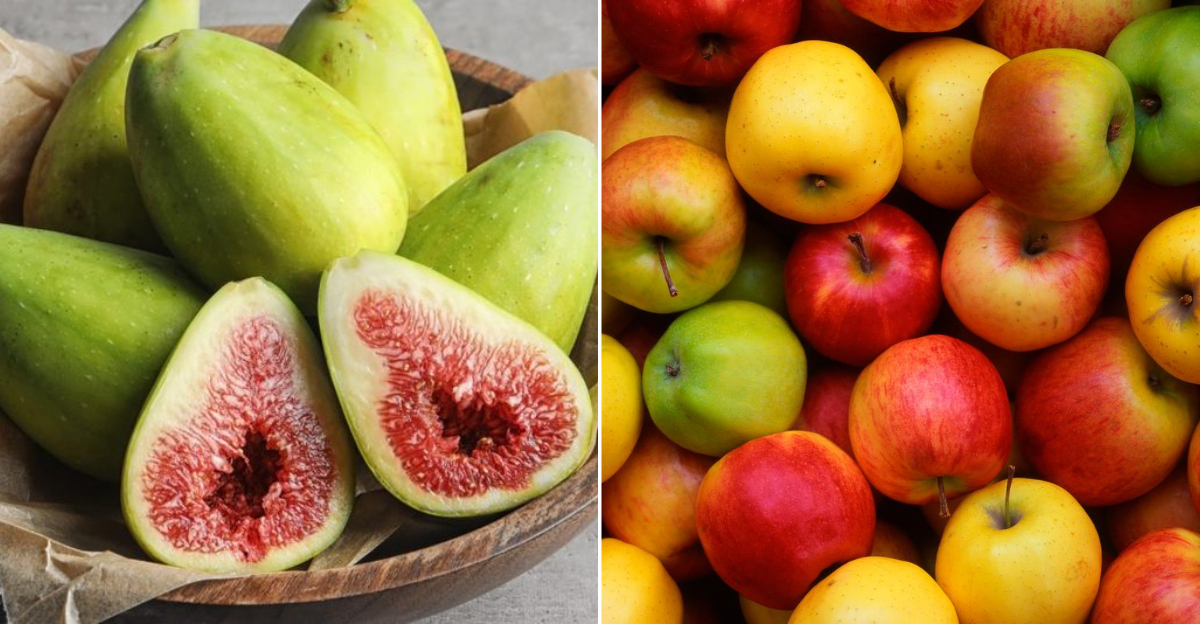Top 11 Fruit With The Most Sugar

Ever wondered which fruits pack the sweetest punch?
While fruits are healthy with vitamins and fiber, some contain surprisingly high amounts of natural sugar.
I’ve always been curious about this since my doctor mentioned watching my sugar intake – even from natural sources!
Let’s explore the sweetest fruits nature has to offer and see which ones might be worth enjoying in moderation.
1. Mango: Naturally High In Sugar
Nothing beats sinking your teeth into a perfectly ripe mango on a hot summer day! These juicy orange delights contain about 46 grams of sugar per medium fruit, making them one of the sweetest options in the produce aisle.
During my trip to Thailand, I couldn’t resist buying mangoes from street vendors daily. The locals laughed at my addiction! While mangoes offer plenty of vitamin C and fiber, their high sugar content means you might want to stick to smaller portions.
Try freezing mango chunks for a refreshing treat that forces you to eat more slowly – a sneaky way I’ve found to enjoy the sweetness without overindulging.
2. Grapes: Nature’s Candy Clusters
Pop-able and dangerously snackable, grapes earned their nickname as ‘nature’s candy’ honestly! A single cup of these little gems contains approximately 23 grams of sugar, which adds up quickly when you’re mindlessly munching.
My grandmother used to freeze grapes for us as kids – a trick I still use today when I’m craving something sweet. Red and purple varieties typically contain more sugar than green ones, but they also pack more antioxidants as a tradeoff.
Grapes’ high water content makes them refreshing, but their concentrated sugar means they can spike blood sugar faster than other fruits. I’ve found pairing them with a protein like cheese helps balance their sweetness.
3. Cherries: Ruby Red Sugar Jewels
Cherry season sends me into a frenzy every summer – I can easily devour a pound without blinking! These ruby gems contain about 18 grams of sugar per cup, explaining why they’re so irresistibly sweet.
Last summer, I stained my favorite white shirt while pitting cherries for a pie. Worth it! Beyond their sweetness, cherries contain compounds that may help reduce inflammation and improve sleep quality thanks to their natural melatonin content.
The deep red varieties tend to contain more sugar than tart cherries, which makes sense given their flavor profiles. I’ve learned to appreciate tart cherries in recipes where I can control added sweeteners while still enjoying their distinctive cherry flavor.
4. Bananas: The Portable Sugar Sticks
My go-to breakfast companion contains more sugar than you might expect! A medium banana packs about 14-15 grams of sugar, with the amount increasing as the fruit ripens – those brown spots are literally sugar developing.
During my marathon training, I relied heavily on bananas for quick energy. The combination of natural sugars, potassium, and easy portability makes them an athlete’s friend. However, the sugar content can add up quickly if you’re using multiple bananas in smoothies.
Green bananas contain more resistant starch and less sugar, which means they have a lower glycemic impact. I’ve started choosing slightly underripe bananas when I want to moderate my sugar intake while still enjoying their creamy texture.
5. Figs: Ancient Sugar Packages
These ancient fruits have been satisfying sweet tooths for thousands of years! Fresh figs contain approximately 10 grams of sugar per 100 grams, while dried figs concentrate that sweetness even further – explaining why they taste like nature’s candy.
My first encounter with fresh figs came from my neighbor’s tree – I was hooked after one bite of the honey-sweet interior. The tiny seeds provide a delightful crunch against the soft flesh. Their unique combination of sweetness and texture makes them perfect for both sweet and savory dishes.
Dried figs can contain up to 48 grams of sugar per cup, making them one of the most sugar-concentrated fruits available. I’ve learned to use them sparingly as natural sweeteners in oatmeal or yogurt.
6. Lychee: Exotic Sugar Spheres
These fragrant little orbs from Southeast Asia might look unassuming, but they’re sugar bombs in disguise! A cup of fresh lychees contains about 29 grams of sugar – explaining their intensely sweet, floral flavor that’s almost candy-like.
I discovered lychees during a cooking class in Singapore. The instructor laughed when I couldn’t stop peeling and eating them instead of adding them to our dessert! Their translucent flesh and unique texture make them unforgettable once you’ve tried them.
Lychees offer good amounts of vitamin C despite their sweetness. I’ve found they make excellent frozen treats – just peel, pit, and freeze for a refreshing snack that forces slower consumption, helping me enjoy their sweetness without overdoing it.
7. Pomegranate: Ruby Seed Treasure Chests
Cracking open a pomegranate feels like discovering hidden treasure! Those ruby-red arils (seed sacs) contain about 24 grams of sugar per cup, delivering a sweet-tart flavor explosion with every bite.
My kitchen looked like a crime scene the first time I tried to open one – red juice everywhere! Now I’ve mastered the underwater method. Beyond their sweetness, pomegranates are packed with powerful antioxidants called punicalagins that may help fight inflammation.
The seeds provide a satisfying crunch that slows down consumption naturally. I sprinkle them on salads or yogurt for bursts of sweetness without needing the whole fruit at once – a trick I’ve found helps me enjoy their flavor while moderating sugar intake.
8. Persimmons: Orange Sugar Orbs
Biting into an unripe persimmon once left my mouth feeling like I’d eaten chalk – lesson learned! When fully ripe, these vibrant orange fruits transform into nature’s pudding, containing approximately 21 grams of sugar per fruit.
My Japanese neighbor introduced me to persimmons, showing me how to tell when they’re perfectly ripe – soft and jelly-like for Hachiya varieties. The Fuyu type can be eaten while still firm, like an apple. Their honey-sweet flavor intensifies as they ripen, creating an almost caramel-like taste.
Persimmons offer good amounts of fiber, which helps slow sugar absorption. I’ve started slicing firm Fuyu persimmons into salads for sweetness without the sugar rush that comes from eating the super-soft, pudding-like fully ripened ones.
9. Oranges: Citrus Sugar Spheres
That refreshing orange you reach for contains more sugar than you might expect – about 12-17 grams per medium fruit! The natural sweetness balanced with acidity makes oranges irresistible while disguising their sugar content.
Growing up in Florida, I had an orange tree in my backyard. Nothing beats that fresh-picked sweetness! The fiber in oranges (about 3 grams per fruit) helps slow sugar absorption, making them a better choice than orange juice, which concentrates the sugars without the fiber.
Blood oranges typically contain slightly less sugar than navel varieties but offer additional antioxidants that give them their distinctive color. I’ve found eating the whole fruit segments rather than drinking juice helps me feel more satisfied while consuming less sugar overall.
10. Pineapple: Tropical Sugar Spikes
My fingers always end up sticky when cutting fresh pineapple – worth it for that tropical sweetness! A cup of pineapple chunks packs about 16 grams of sugar, explaining why it’s so satisfyingly sweet.
Last summer, I brought a freshly cut pineapple to a beach picnic. Everyone’s faces lit up at that first juicy bite! Beyond its sweetness, pineapple contains bromelain, an enzyme that may help reduce inflammation and aid digestion.
The core, while tougher, contains less sugar and more fiber than the sweeter flesh. I’ve started including some core pieces when making smoothies – you barely notice the texture difference when blended, but it helps reduce the overall sugar content while adding extra fiber.
11. Apples: Everyday Sugar Packages
An apple a day keeps the doctor away – but it also delivers about 19 grams of sugar per medium fruit! Different varieties contain varying amounts, with Red Delicious and Fuji typically ranking highest on the sweetness scale.
My grandfather grew heritage apple varieties, teaching me to appreciate their diverse flavor profiles. Granny Smith apples contain less sugar (about 16 grams) and more malic acid, explaining their tart profile. The fiber in apples, particularly in the skin, helps slow sugar absorption.
Apple juice concentrates the sugar without the fiber benefit – explaining why I feel hungrier after a glass of juice than after eating a whole apple. I’ve found that slicing apples makes them seem like a more substantial snack, helping me feel satisfied with just one fruit.
